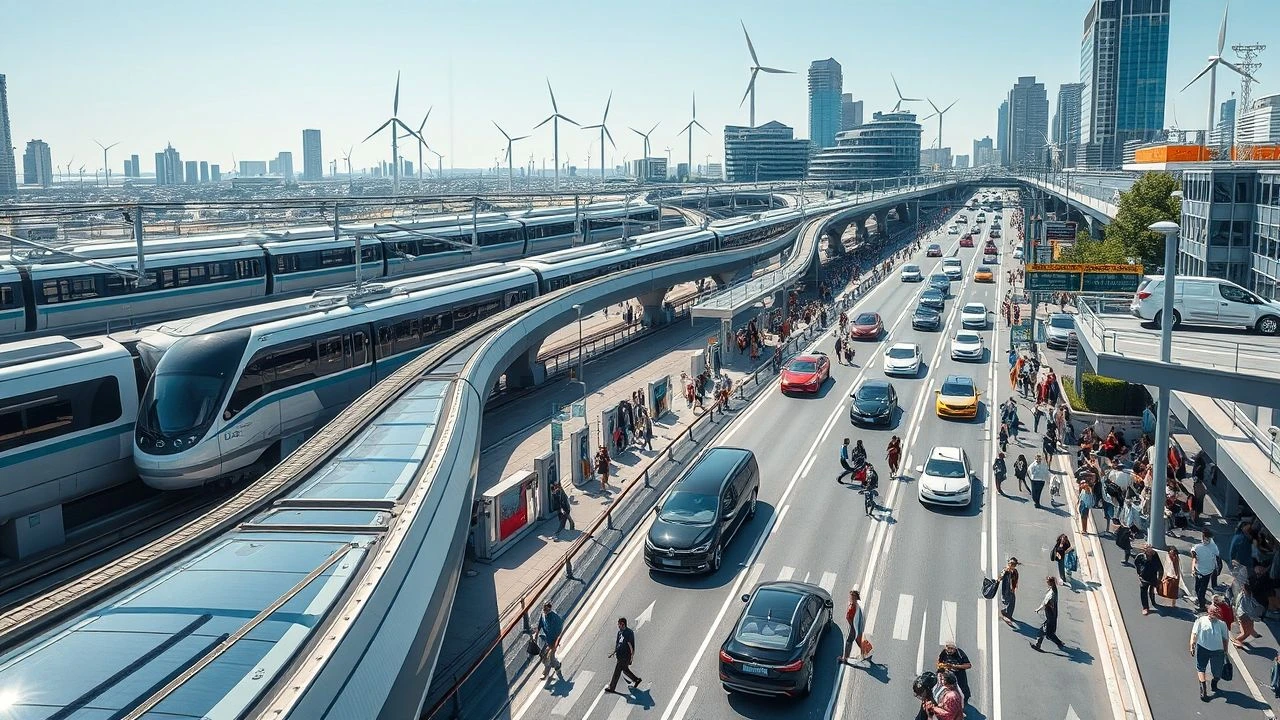
Expert opinions only reinforce this view. Many economists reckon that inadequate infrastructure acts as a serious drag on productivity. It makes it harder to move goods, discourages investment, and generally gums up the works. Improving the infrastructure could provide a big boost, opening up markets and making the entire country more competitive.
We only have to look at a few examples to see the consequences of this neglect. The collapse of bridges, the constant delays on railways, and the sheer inefficiency of many airports highlight the problems and these failings don't just cause headaches; they can have very serious consequences for safety and the economy. Investing in infrastructure modernisation isn't just a nice-to-have; it's an urgent necessity if the U.S. wants to maintain its competitive edge in the 21st century.
One major thrust involves smart traffic management. Think advanced sensor networks, real-time data analysis, and adaptive traffic signals that respond to changing conditions. This isn't just theoretical; pilot programmes in cities like Denver and San Francisco are already demonstrating how these systems can shave commute times and ease congestion. "The key is to move from reactive to proactive infrastructure management,"
says urban planning guru, Professor Anya Sharma, at UCL, highlighting the need for a joined-up approach.
Then there's the electric vehicle (EV) revolution. Proposals are on the table to ramp up the number of charging points across the country, especially in underserved areas. This is crucial not just for individual EV owners, but also for electrifying public transport fleets, cutting emissions and improving air quality.
Autonomous vehicles (AVs) are also on the agenda, with discussions focusing on creating designated testing corridors and establishing safety standards. While a fully autonomous future might still be some way off, industry reports suggest that even limited deployment of AV technology, such as in freight transport, could yield significant economic benefits. Many, however, stress the importance of ethical considerations and robust regulatory frameworks before widespread adoption. Consider these points:
Ultimately, the success of these proposals hinges on a combination of investment, innovation, and, critically, collaboration between federal, state, and local governments, as well as the private sector. Only through a coordinated effort can the U.S. truly overhaul its transportation networks and build a system fit for the 21st century.
Sustainability is no longer just a buzzword; it’s a core principle shaping the future of U.S. transportation. The focus is shifting towards environmentally conscious options, with electric vehicles taking centre stage. Government reports and environmental studies consistently highlight the urgent need to decarbonise the transport sector. This requires promoting the adoption of EVs, investing in efficient public transport networks, and embracing eco-friendly urban planning that reduces reliance on personal cars.
Consider this from a recent report by the Environmental Protection Agency: A strategic investment in public transport, coupled with a widespread transition to electric vehicles, will be key to achieving significant reductions in greenhouse gas emissions from the transportation sector.
Moreover, sustainability isn’t just about reducing emissions; it’s about creating liveable communities. Thoughtful urban designs that prioritise pedestrians, cyclists, and public transport can improve air quality, reduce congestion, and create more pleasant living environments. As one prominent community leader put it: The future of transportation isn’t just about moving people from point A to point B; it’s about creating thriving, connected communities.
This vision needs proper funding to flourish.
The path forward involves a collaborative effort from environmental advocates, policymakers, and community stakeholders to ensure that the U.S. transportation system is not only modernised but also sustainable and equitable for all. Only through this collaborative spirit can the U.S. truly establish a transport future which is both economical and environmentally sound for generations to come. The marriage of adequate funding with sustainability-driven planning is essential to ensuring the U.S. infrastructure revival benefits everyone.

AI in Healthcare: Revolutionizing Patient Care and Navigating Ethical Dilemmas
Rising Mental Health Awareness Demands Stronger Support Systems and Accessible Resources
Navigating the AI Revolution: Why Regulation is Now Essential
AI Ethics: Tech Leaders and Ethicists Clash Over Algorithmic Bias and the Future of Responsible AI Development
Cities Prioritize Public Transportation Improvements for Sustainable and Accessible Urban Living
Navigating the Ethical Minefield of Artificial Intelligence: A Call to Action